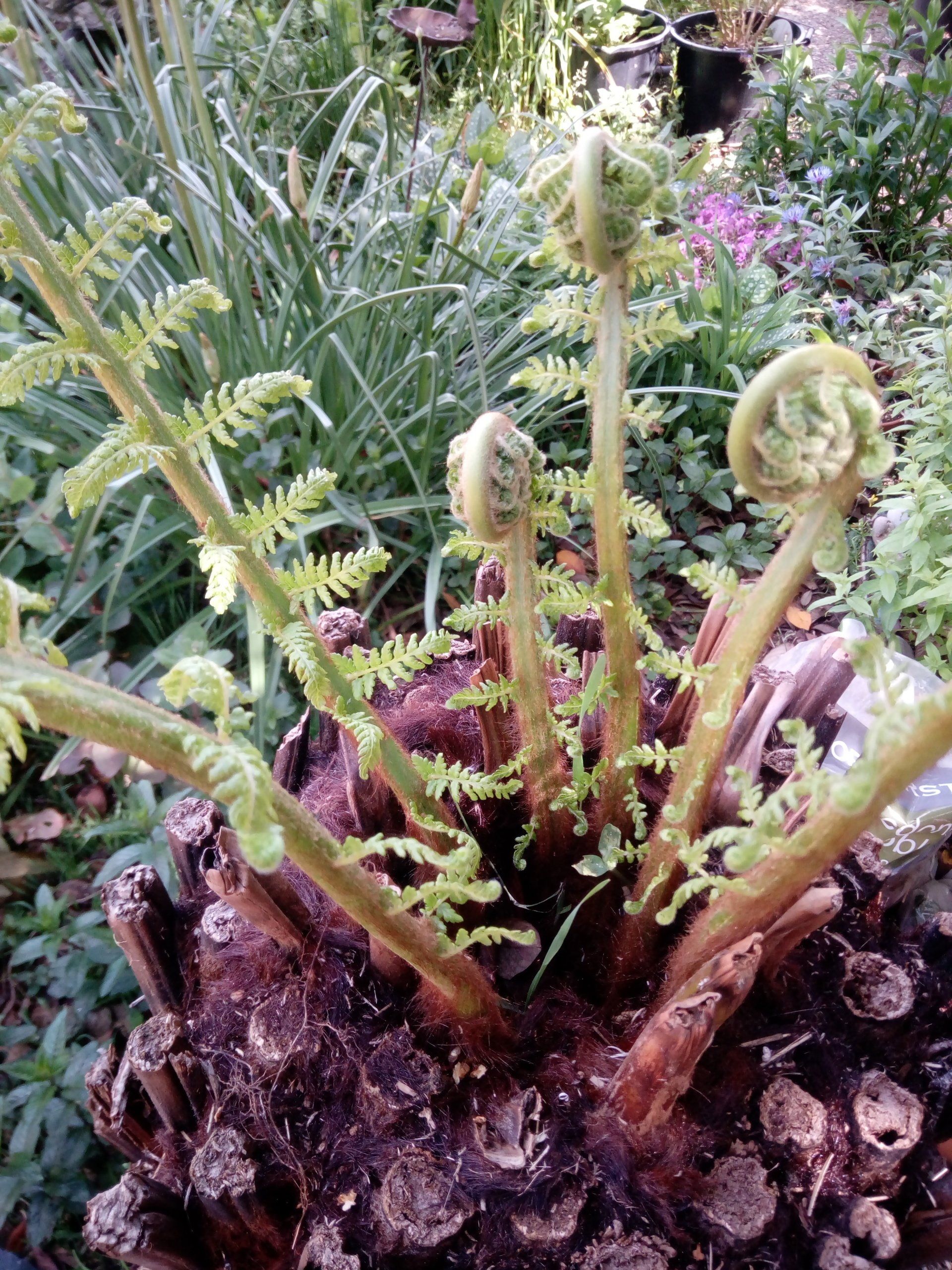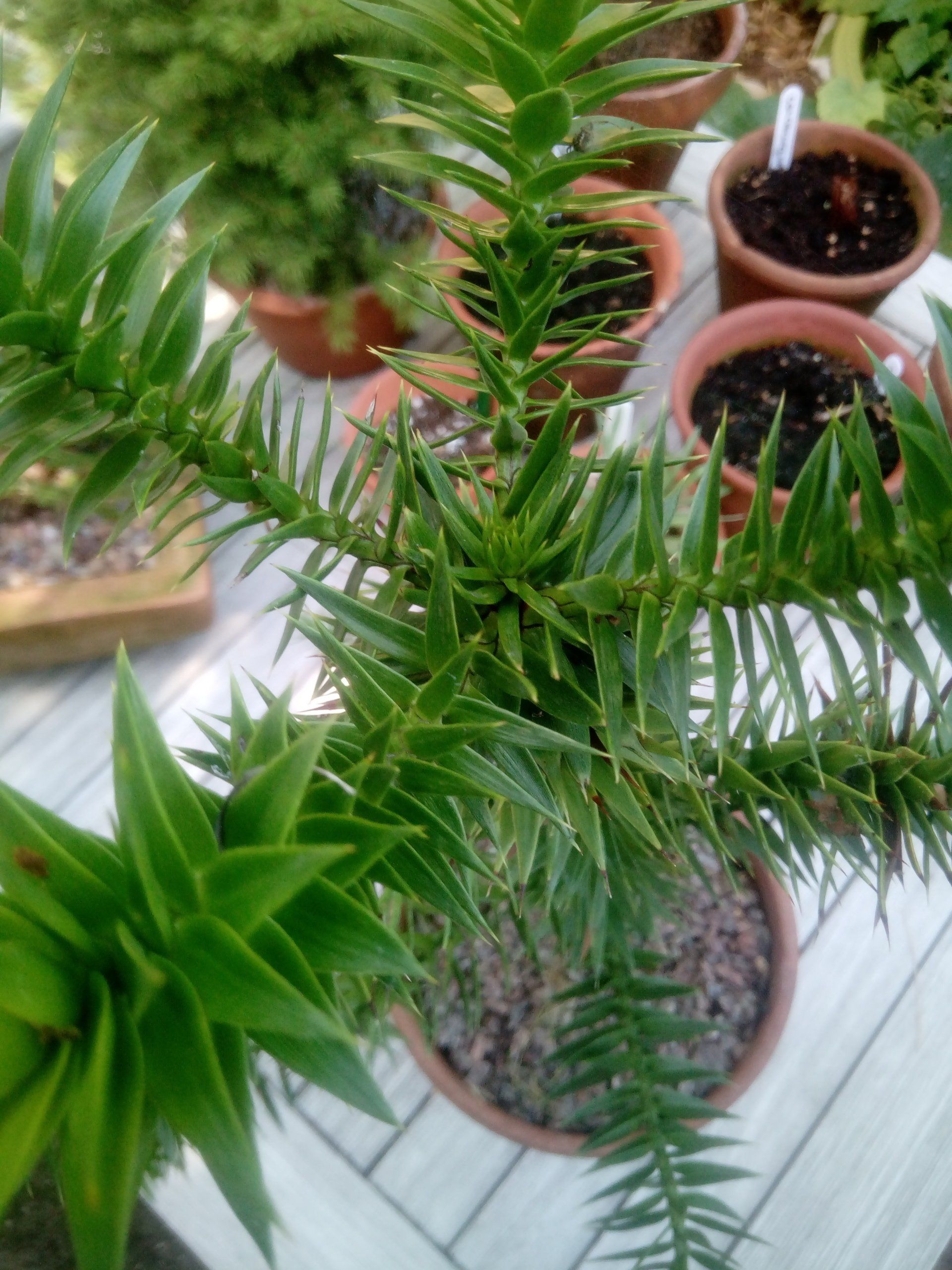Grow Plants that were around when Dinosaurs Roamed the Earth
Dinosaurs are now extinct but the plants that were around when they roamed the earth are very much still with us. Many of these have stunning architectural form and make a real conversation starter when grown in your garden. All of the below can be easily grown in the UK (the tree fern needs some winter protection though). So why not grow something that was alive over 200 million years ago?
Dicksonia antarctica - The Soft Tree Fern
Tree ferns are native of Australia and New Zealand but will grow happily in the UK as long as the crown of the plant where the fronds emerge from is protected in winter. They form a trunk as they grow which is composed of matted roots. In the spring and early summer fronds unfurl from the centre of the plant. These are covered in small hairs when they first emerge, a brown fur coating which is very tempting to stroke. I have known the fronds not to start appearing until June so don't panic if you don't see growth in spring. In general the more you water tree ferns the bigger the fronds. Tree ferns are watered differently from many plants, you water a tree fern by pouring the water into the top of the plant where the fronds come from. It is also a good idea to water the trunk as the tree ferns roots are on the outside of the trunk and not in the pot or in the ground! Feed your tree ferns for best results, use either a proprietary tree fern or fern fertiliser. This is diluted in water and poured into the crown of the plant during the growing season in spring and summer. Tree ferns grow best in a semi-shaded area. In winter protect the growing tip where the fronds emerge from. Place straw into this area and cover the tree fern with horticultural fleece. If moveable, and in a pot, move to a sheltered spot by the house.
Ginkgo biloba
Ginkgos were actually considered to be extinct until a plant was found 1691 when it was found in Japan by the botanist Engelbert Kaempfer. It was not classified as a Gingko until 1771. There are now about 200 different cultivars. Ginkgo are deciduous and there are dwarf forms and those that will grow into a tree. There are also male and female forms. It is preferable to grow male forms in the garden as the female Ginkgo produce fruit that has the smell of rotting meat! (ewww yuk ). They don't reach seed bearing age until they are 25-35 years old so that may not be a problem for you if you aren't going to be in the property that long! They like full sun and are completely hardy in the UK. They are extremely low maintenance and have no major pests or diseases.
Araucaria araucana - Monkey Puzzle Tree
The Monkey Puzzle Tree was seen in gardens everywhere in the 1970's but is less commonly seen nowadays. It was at its height of popularity in the Victorian Era. No one really knows where it got its name from but it is rumoured that the barrister Charles Austin said "it would puzzle a monkey to climb that". It is an extremely prickly plant and slow growing when young, but will eventually grow into an unusual looking tree. In their native Chile they are endangered. They are evergreen and can reach 30 metres and live for 1000 years! They are fully hardy in the UK and will grow in sun or partial shade in a moist but well drained soil. They are extremely low maintenance.








